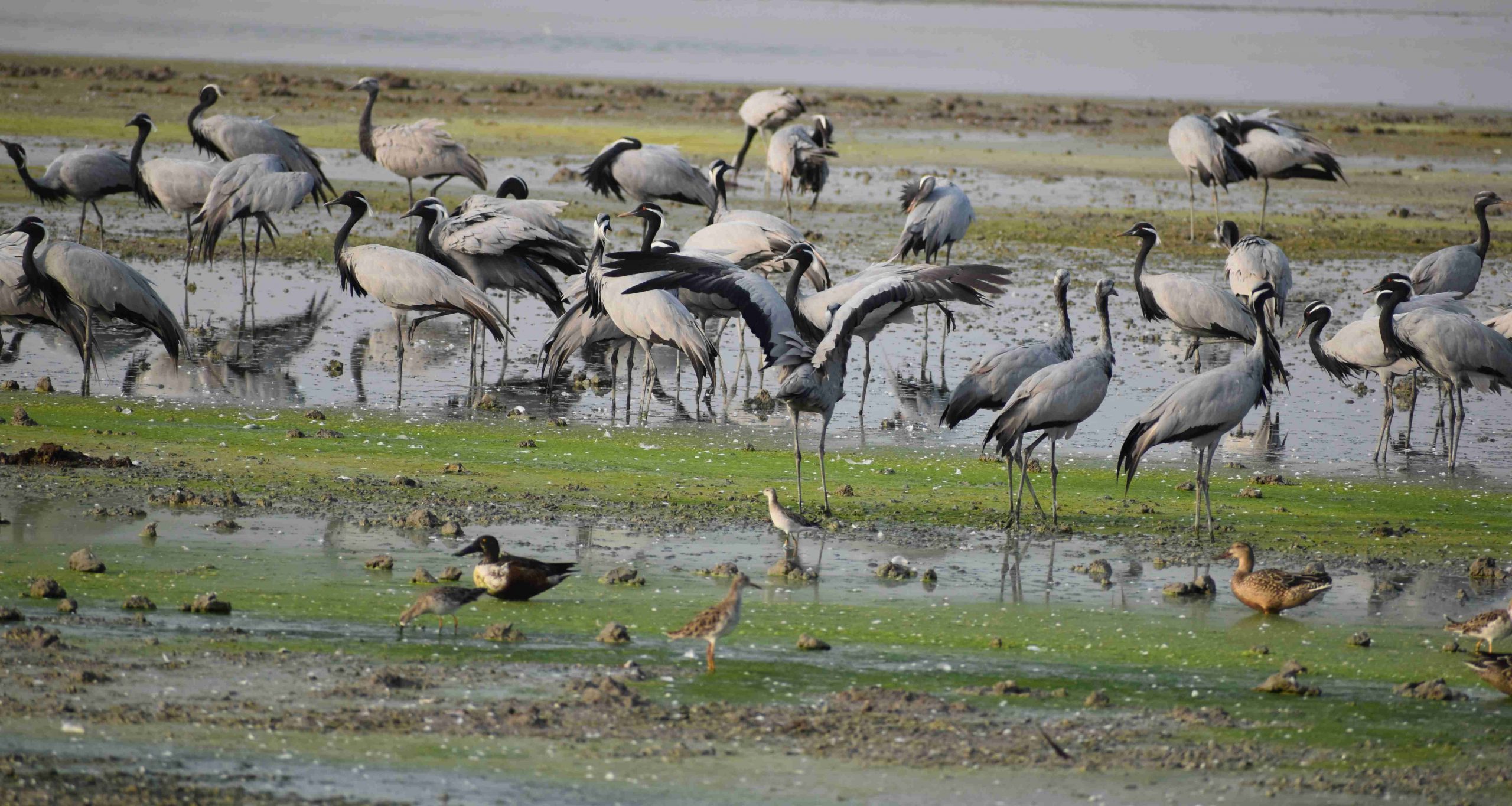Brace yourself for dire consequences. Migratory birds are dumping the deserts
With the change in season, many areas in the country witness the arrival of migratory birds. However, factors like the pastures being robbed off their greenery and destroying of the traditional water resources have made the advent of these migratory birds increasingly difficult


With the change in season, many areas in the country witness the arrival of migratory birds. Their migration is not limited to their food requirements, but also is a complete ecological cycle in itself that helps balance the environment. The migration of these birds is vital to the human civilization and provides economic benefits to the society. Through generations, the migration pattern of the birds has remained pretty much unaltered, including their winter destination.
Several regions of Rajasthan also host the migration of flocks of birds from various places across the world. The Panchpadra region of Barmer district, which was once known for salt production, is now coming up with a new identity in the Indian map due to the announcement of a refinery establishment and beginning of construction activity. However, the aspirations to create avenues of jobs and revenue generation have overlooked yet another identity of the region where demoiselle crane and other migratory birds flock to, annually, in a huge number. By the water of a salt lake, that spreads across vast distance, this year too, thousands of birds can be spotted arriving.
The specialty of the Thar Desert is that it hosts, since time eternal, several species of native as well as migratory birds in winters. They play a crucial role in maintaining the biodiversity of the region. They settle themselves by the water bodies such as the Churu district’s Taal Chapar, Bikaner’s Lunkarnasar, Gajner Lake, Jodhpur’s Kheechan and Baap Thana regions of Falodi, Barmer’s Panchpadra, Tirsingri, Korna, Newai villages and Jaisalmer’s ponds.
The traditional water resources of the desert, safe and tranquil atmosphere and local people’s affection towards living creatures are a few reasons behind the birds preferring the region to any other. People of Thar, especially women, have a sort of almost filial relationship with demoiselle crane. The conversations between the women and the crane popularly form the basis of many folk songs in Rajasthan.

Traversing across the natural and political divides of various countries, demoiselle crane and other such species of birds travel thousands of kilometres from the cold regions of South-Eastern Europe, Siberia, Northern Russia, Ukraine and Kazakhstan to the Thar Desert and return when the temperature begins to rise. Due to monsoons, the ponds and the lakes of the desert get filled with water and the temperature dips and then with the crops harvest, begins the arrival of migratory birds. Ambient temperature, water-filled ponds and lakes, greener pastures and the seeds scattered across the post-harvest fields tempt the birds.
Now, however, the situation is changing rapidly. The rapid rate of development, development of sources of power and transport, market’s interference in lifestyle, mining and industries in blatant disregard to the natural and environmental values as well alienation of man from nature has left the Thar Desert in a quandary.
The factors like the pastures being robbed off their greenery and destroying of the traditional water resources have made the advent of these migratory birds increasingly difficult. The day doesn’t seem far when it would stop altogether. Living in close coordination with the nature, the birds are extremely sensitive and quickly sense hostility. This is why the crane and other migratory birds have taken to swiftly alter their whereabouts in the deserts.
The recent death in thousands of native as well as migratory birds in Taal Chapar is a warning to the society and the government to put in order the remaining bird habitats in the desert. The proposed refinery in Panchpadra will provide a boost to the industries as well as the population of the region. The reclusive salt lake has suddenly found numerous claimants. Unlawful encroachments have begun occurring. The refinery will also give rise to the atmospheric pollution. Ignoring the birds’ presence, it may not be difficult to take a certificate from the pollution control authority. The birds’ habitat has been covered with waste and garbage from Panchpadra town. An entire flock of cranes can be found resting upon a mound of rubbish.

After the Chapar Taal episode, the government has been repetitively claiming to be serious about the issue. If this limits itself to the investigation into the death of thousands of birds in Chapar Taal, it would be problematic for the environmentalists and animal welfare workers. It would have been better had the government wizened up after the Chapar Taal episode and would have taken a serious look at all habitats of migratory birds in Thar Desert and issued directives to the respective departments towards the protection and conservation besides promoting pasture development schemes and conservation and protection of water resources in partnership with the community and gram panchayats.
If only the society, learning from the people of Korna village, had stepped forward for the birds’ protection. Two years ago, people of Barmer gathered together to contest and win against the government’s decision to make a grid sub-station near Karena village where Oran and Agore are visited by the cranes and other birds in thousands.
In Kheechan, such birds are protected and conserved with the efforts of the local community and gram panchayats. So, the initiative to protect and conserve other habitats in the desert should originate from both the government and the community. If this issue is not taken seriously now, the human civilization would have to brace itself for dire consequences.
Dilip Bidawat (Charkha Features)

